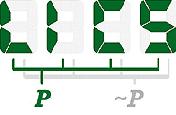Invited Talk: Proving Security Protocols Correct (at LICS 1999)
Authors: Lawrence C. PaulsonAbstract
Security protocols use cryptography to set up private communication channels on an insecure network. Many protocols contain flaws, and because security goals are seldom specified in detail, we cannot be certain what constitutes a flaw. Thanks to recent work by a number of researchers, security protocols can now be analyzed formally.The paper outlines the problem area, emphasizing the notion of freshness. It describes how a protocol can be specified using operational semantics and properties proved by rule induction, with machine support from the proof tool Isabelle. The main example compares two versions of the Yahalom protocol. Unless the model of the environment is sufficiently detailed, it cannot distinguish the correct protocol from a flawed version.The paper attempts to draw some general lessons on the use of formalisms. Compared with model checking, the inductive method performs a finer analysis, but the cost of using it is greater.
BibTeX
@InProceedings{Paulson-ProvingSecurityProt,
author = {Lawrence C. Paulson},
title = {Proving Security Protocols Correct},
booktitle = {Proceedings of the Fourteenth Annual IEEE Symp. on Logic in Computer Science, {LICS} 1999},
year = 1999,
editor = {Giuseppe Longo},
month = {July},
pages = {370--383},
location = {Trento, Italy},
note = {Invited Talk},
publisher = {IEEE Computer Society Press}
}
